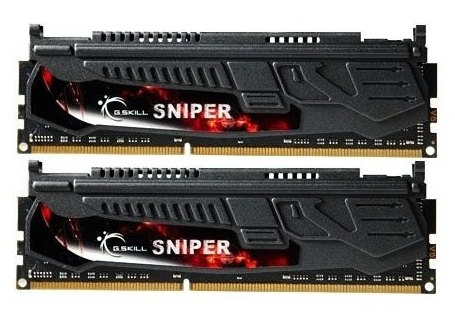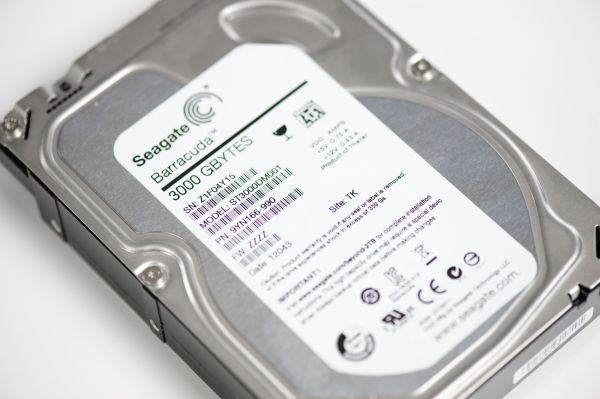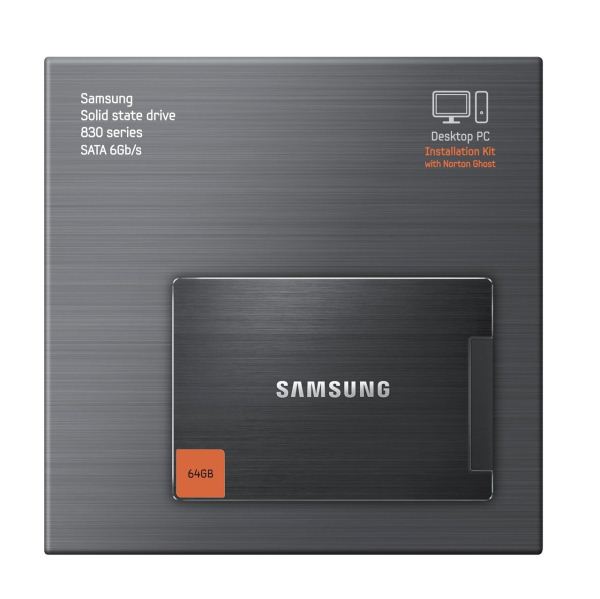AMD Llano HTPC Builders Guide
by Ganesh T S on June 5, 2012 8:02 AM ESTAlmost all present-day memory modules are at least DDR-1333. Depending on the APU chosen, the reader should go for DDR3-1600 or even DDR3-1866, as the added bandwidth can improve the iGPU performance in particular, and there is not much point in purchasing a module with lower speeds than what the APU natively supports. It is always possible to run higher rated memory modules at lower speeds if one wants to save power or reduce heat, and it is generally better to purchase modules with lower latency specifications, as this has the potential to improve performance in games and sometimes even for renderers such as madVR.
For most HTPC applications, 4GB of memory is more than enough. However, if you are repurposing the HTPC for other tasks such as intenstive video and photo editing, it might be worthwhile to invest in 8GB of memory. While performance typically does not vary between brands (assuming the same timings and clock speed), reliability might. It is therefore essential to choose the memory vendor and model carefully.
Some of the memory kits we recommend for the lower-end APUs (A4-3300 and A4-3400) are below. While all memory modules should work with all motherboards in theory, in practice that's not always the case, particularly if you're going to run low voltage modules. We recommend checking motherboard vendor compatilibity lists if you're not willing to deal with the potential need to return your memory kit for a more compatible set.
- G.SKILL Sniper Low Voltage Series 8GB (2 x 4GB) DDR3-1600: This kit operates at a lower voltage (1.25V) compared to similar kits, and can run cooler. The timing is also quite good at 9-9-9-24 when operating at 1600MHz. Coming in at $52, this is one of the best kits for a low power HTPC.

- G.SKILL ECO 8GB (4 x 2GB) DDR3-1600: This kit also operates at a lower voltage (1.35V) and has excellent timing parameters of 8-8-8-24. However, it is a quad channel kit and can only be fully utilized with an appropriate motherboard. Priced at $100 it's somewhat expensive, but it may prove more compatible for some systems than 1.25V kits like the above Sniper Low Voltage.
- AMD Entertainment Edition 2GB (1 x 2GB) DDR3-1600: This is one of the cheaper alternatives, coming in at $16. It operates at the standard 1.5V with timing parameters of 9-9-9-24.
For the higher-end APUs, we recommend memory kits rated for DDR3-1866. At these speeds, it is not possible to get low voltage kits.
- G.SKILL Ripjaws X Series 8GB (2 x 4GB): This kit comes in at $75, operates at 1.5V, and has timings of 8-9-9-24. Users have reported that it overclocks effortlessly to 2133MHz. This makes it an idea candidate for HTPCs that will also serve as gaming rigs.
- Crucial Ballistix 2GB (1 x 2GB): Coming in at $21, it is quite cheap compared to the G.SKILL kit above, but you only get one fourth the total memory. It operates at the same 1.5V and has the same timings. Of course, the drawback is that even with four of these in an appropriate motherboard, you only have 8GB of memory while the previous kit can give you 16GB.

Moving on to storage options, the reader will have to take a stance on the HDD vs. SSD debate. While a cheap SSD might sound very tempting (and may even prove excitingly fast in the initial days), the choice must be made only after careful consideration. At AnandTech, most of the SSDs that get reviewed go into production machines. I have been using an OCZ Agility 3 240GB SSD in my personal laptop. It is based on the SandForce SF-2281 controller. Unfortunately, I have experienced annoying random BSODs whenever I try to hibernate or put the laptop to sleep even with the latest firmware. A quick search on the various SSD forums indicates that SandForce-based SSDs usually don't like hibernation or sleep mode. This is just something to keep in consideration, because it is quite common to put HTPCs in sleep mode when not in operation.
If you plan to use your HTPC just as a front-end for local media residing in a NAS/optical drive, a 128GB SSD should serve you well. On the other hand, if you are planning to use your HTPC as a recording or download machine, it is suggested that you go in for a 2TB or 3TB hard drive in addition to having a 64GB SSD as a boot drive. If the HTPC is to be used in the backend as a media server/download or recording machine (and a media streamer or some other device is going to be used in the front-end), a SSD is not needed at all.
We've selected an SSD and hard drive for use with HTPCs below:
- SAMSUNG 830 Series MZ-7PC064D/AM 2.5" 64GB SSD: Samsung's 830 series was well received by us, and Samsung has a good track record of reliability. At $90, the price per GB is much higher than the budget drives, but trust us, a worry-free experience even with unusual HTPC usage scenarios is worth it. If you want more storage in your SSD, a more cost effective purchase would be the SAMSUNG 830 Series MZ-7PC256B/WW 2.5" 256GB SSD that is currently on sale for $250.
- Seagate's Barracuda 3TB (ST3000DM001): This hard drive is currently priced at $158 on Amazon. It has 3x1TB platters and delivers better performance than the initial 5x600MB hard drives. For users that like to record TV shows and/or download media files, 3TB is definitely not overkill when it comes to hard drive capacity.












76 Comments
View All Comments
BPB - Tuesday, June 5, 2012 - link
I was hoping to see mention of the newer AMD APU's. As for me I am going to mount the Foxconn unit below to my TV and use it for my HTPC. It's $175 and for not much more I can plop memory, HDD, and OS in it.http://www.newegg.com/Product/Product.aspx?Item=N8...
geniekid - Tuesday, June 5, 2012 - link
I built a Llano-based HTPC about 8 months ago using many of the parts listed in this guide. One thing I will point out is I ended up buying a third party CPU cooler since the retail fan was a bit loud for me. Other than that, the Seasonic SS-400FL is fanless so the only other source of noise for me was the case fans that came with the Grandia 05, which were good enough for me.lurker22 - Tuesday, June 5, 2012 - link
The problem is AMD's Llano can't run Netflix HD well because Silverlight doesn't have GPU acceleration enabled for the chip. It's a shame, as otherwise it's a GREAT CPU for HTPCs and cheap! Until MS either gets GPU acceleration working, or Netflix moves from Silverlight one still needs a more powerful CPU to be able to do everything with their HTPCBPB - Tuesday, June 5, 2012 - link
This is a good point. As a matter of fact, it has me reconsidering getting the little system I mentioned above. Of course I can do Netflix HD via my TV's app, but still, do I want to get an APU that can't even run Netflix? Hmmm....lurker22 - Tuesday, June 5, 2012 - link
I was about to purchase an e-350 based system, until I saw the lack of Netflix HD acceleration. No point buying something new which doesn't cover all the usage needs when my old HTPC can...burntham77 - Tuesday, June 5, 2012 - link
I have the exact same hardware, and Netflix in WMC stutters with HD video. If I set my Netflix account quality settings to the middle or low setting, it works fine, but obviously things don't look as nice.Luckily I have a PS3 and 360 hooked up to the same TV, but it is a shame that Microsoft dropped the ball on Silverlight in this regard.
duploxxx - Tuesday, June 5, 2012 - link
THe problem isn't the LIano, any other pentium, celeron i3 ULV or wathever (even latest macs) will have an issue, it's just the Silverlight piece of crap. BTW it's only HD streaming that provides issues.many have already reported that it run's better in different browsers (chrome-safari)
lurker22 - Tuesday, June 5, 2012 - link
Yes, and those CPUs have the power to run Netflix HD without the GPU acceleration :)duploxxx - Wednesday, June 6, 2012 - link
nope, on forums they report the same issues with that type of cpu i mentioned.knutjb - Tuesday, June 5, 2012 - link
I have an A8-3850 w/hardware acceleration set. I have not experienced any issues with Netflix. Does someone have a current list of gpu support in Silverlight 5? I couldn't find any list in a quick search.I have had no problems. Sits next to my reveiver behind pictures with audio through toslink, 1080 video through HDMI. All fans connected to MB, cannot hear from couch when set to 100% with sound off. Plays music too set @ 24bit 96k. Surprisingly good sound from older Denon receiver. Can hear the difference between 16 & 24 bit with better recordings.
Caught sales for everything.
Lian Li PC-351 with side vent holes taped off to force air through power supply.
G.SKILL Sniper Series 8GB 1866 oc'd in bios.
GIGABYTE GA-A75M-UD2H
SAMSUNG 830 Series MZ-7PC064D
Seasonic SS-460FL
Seagate 1TB HD